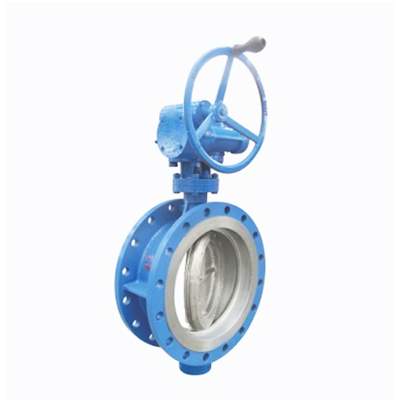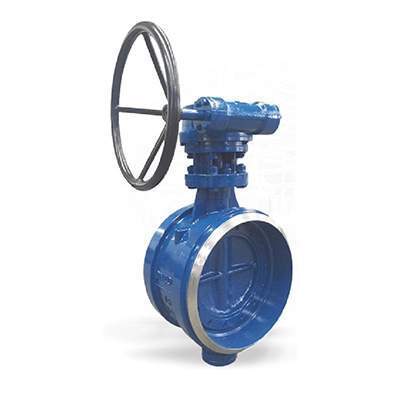Welcome to My Blog!
Before we dive into the content, I’d love for you to join me on my social media platforms where I share more insights, engage with the community, and post updates. Here’s how you can connect with me:
Facebook:https://www.facebook.com/profile.php?id=61563865935136
Now, let’s get started on our journey together. I hope you find the content here insightful, engaging, and valuable.
Introduction

In various industrial applications, the butterfly valve size plays a critical role in ensuring optimal flow control. Selecting the appropriate butterfly valve size is essential for maximizing efficiency, minimizing pressure drops, and preventing system failures. This blog post aims to provide a comprehensive guide on how to choose the right butterfly valve size for your specific needs, covering essential factors, calculation methods, and frequently asked questions. Proper sizing ensures that the valve operates within its design parameters, contributing to the longevity and reliability of the entire system.
Understanding Butterfly Valve Size and Its Importance
The butterfly valve size refers to the nominal diameter of the valve, typically measured in inches or millimeters. This size directly impacts the flow capacity, pressure drop, and overall performance of the valve. Choosing the correct butterfly valve size is crucial for:
- Optimizing Flow Rate: An undersized valve can restrict flow, leading to reduced efficiency and increased energy consumption. This restriction can also lead to increased wear and tear on pumps and other system components.
- Minimizing Pressure Drop: An oversized valve can cause unnecessary pressure drops, affecting system performance and stability. These pressure drops can result in higher operating costs and reduced output.
- Ensuring System Safety: Selecting the appropriate valve size helps prevent system failures due to excessive pressure or flow. Inadequate sizing can lead to catastrophic failures, causing damage to equipment and endangering personnel.
Key Factors to Consider When Choosing Butterfly Valve Size
Several factors influence the selection of the appropriate butterfly valve size. These include:
- Flow Rate: The volume of fluid that needs to pass through the valve per unit of time. Accurate flow rate measurement is crucial for proper valve sizing.
- Pressure Drop: The allowable pressure loss across the valve. This pressure drop must be within acceptable limits to maintain system efficiency.
- Fluid Properties: The viscosity, density, and temperature of the fluid. These properties can significantly affect the valve’s performance and sizing.
- Pipe Size: The diameter of the pipes connected to the valve. The valve size should be compatible with the pipe size to ensure a smooth flow transition.
- Application Requirements: The specific needs of the application, such as throttling, isolation, or flow control. Each application has unique requirements that must be considered.
Calculating Butterfly Valve Size: A Step-by-Step Guide
Determining the correct butterfly valve size involves several calculations. Here’s a step-by-step guide:
- Determine the Flow Rate: Measure or calculate the required flow rate in gallons per minute (GPM) or cubic meters per hour (m³/h). Ensure that the flow rate is measured under normal operating conditions.
- Calculate the Velocity: Use the flow rate and pipe size to calculate the fluid velocity. Maintaining an optimal velocity is essential for efficient flow.
- Determine the Pressure Drop: Calculate the allowable pressure drop based on system requirements. This calculation should consider the system’s overall pressure requirements.
- Use Valve Sizing Charts: Refer to valve sizing charts or software provided by manufacturers to select the appropriate butterfly valve size based on flow rate and pressure drop. These charts provide accurate sizing information based on specific valve characteristics.
- Consider Fluid Properties: Adjust the valve size based on the fluid’s viscosity, density, and temperature. These properties can affect the flow characteristics and pressure drop.
Butterfly Valve Size and its Effects on Flow
The butterfly valve size directly impacts the flow characteristics. A larger valve allows for higher flow rates and lower pressure drops, while a smaller valve restricts flow and increases pressure drops. It’s essential to balance flow requirements with pressure drop considerations to optimize system performance. Selecting the correct size will prevent excess turbulence and therefore less wear on the valve and system.
Butterfly Valve Size and Pressure Drop Considerations
Pressure drop is a critical factor in valve selection. Excessive pressure drop can lead to reduced system efficiency and increased energy consumption. The valve size should be chosen to minimize pressure drop while maintaining the required flow rate. Minimizing pressure drop leads to lower operating costs, and longer equipment life.
Butterfly Valve Size and Application Specific Requirements
Different applications have unique requirements that influence valve size selection. For example:
- Throttling applications require valves with specific flow characteristics to control flow rates accurately. These valves must offer precise control over the flow.
- Isolation applications require valves that can provide a tight shutoff to prevent leakage. This is vital for safety, and for preventing product loss.
- Flow control applications require valves that can maintain a constant flow rate under varying conditions. These valves are essential for processes that require consistent flow.
Tips for Optimizing Butterfly Valve Size Selection

To ensure optimal performance, consider these tips:
- Consult with valve manufacturers or suppliers for expert advice. Their expertise can help you choose the best valve for your application.
- Use valve sizing software or charts to accurately determine the appropriate size. These tools provide precise calculations based on specific valve characteristics.
- Consider future flow rate increases when selecting the valve size. Planning for future expansion can prevent the need for costly replacements.
- Factor in fluid properties and operating conditions. These factors can significantly impact the valve’s performance.
- Always consider the total system, and how the valve will react within that system. This holistic approach ensures compatibility and efficiency.
Conclusion
Choosing the right butterfly valve size is crucial for maximizing efficiency, minimizing pressure drops, and ensuring system safety. By considering the key factors, calculating the appropriate size, and consulting with experts, you can optimize your system’s performance. For all your butterfly valve size needs, please contact us for the best service and products, and allow us to help you find the perfect size for your application. We are committed to providing you with the best solutions.
FAQ
Q: What happens if I choose an undersized butterfly valve?
A: An undersized valve can restrict flow, leading to reduced efficiency, increased energy consumption, and potential system failures. This restriction can cause premature wear on the valve and other system components.
Q: What happens if I choose an oversized butterfly valve?
A: An oversized valve can cause unnecessary pressure drops, affecting system performance and stability. These pressure drops can lead to increased operating costs and reduced output.
Q: How do I calculate the appropriate butterfly valve size?
A: You can calculate the valve size by determining the flow rate, calculating the velocity, determining the pressure drop, and using valve sizing charts. Ensure that all calculations are based on accurate data.
Q: What factors should I consider when choosing a butterfly valve size?
A: Consider the flow rate, pressure drop, fluid properties, pipe size, and application requirements. Each of these factors plays a crucial role in determining the optimal valve size.
